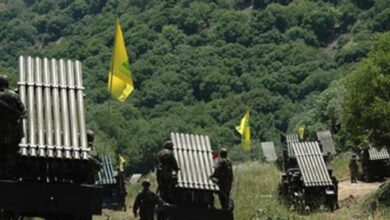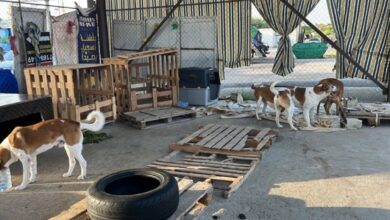This is the real goal of the Israeli aggression against the Iranian consulate in Damascus
The war that Israel is waging against the Gaza Strip, targeting the Hamas movement, and against southern Lebanon, as it is the incubator environment with its Shiite majority for Hezbollah, in parallel with directing painful strikes at the Iranians in Syria, aims primarily to reduce Iranian influence in Palestine, Lebanon, and Syria. By targeting its allies, the United States of America, along with some Western countries, is responsible for trimming the nails of the Houthis in Yemen and preventing them from controlling maritime traffic in the Red Sea.
The war government in Tel Aviv believes that once the role of the Hamas movement in Palestine, Hezbollah in Lebanon, and the Houthis in Yemen is curtailed, Iranian influence in the region will gradually diminish, and thus it will no longer have a direct influence on the course of events, especially since Over the past forty years, Iran has played a role in “every wedding,” and has been strongly present in the regional scene, whether through direct confrontation between Tehran, Washington, and the Western world, or through indirect confrontation through its allies in the region after its influence began to extend from Yemen through Iraq and Syria. All the way to Lebanon and the Gaza Strip. The “Al-Aqsa Flood” operation, and the direct support provided by the “Islamic Resistance” from southern Lebanon that followed it the next day, demonstrated the extent of Iran’s ability to disturb the comfort of the political and military leadership in Tel Aviv through the advanced weapons that were used in the “Flood” operation. Or those destructive, smart and accurate missiles that Hezbollah uses in its operations against advanced Israeli military sites, or those long-range missiles that can reach Eilat, which is hundreds of kilometers away from the southern border. What Israel is currently carrying out in terms of a war of annihilation in the Gaza Strip or through a war of attrition in southern Lebanon, believing that it is thus able to reduce Iranian influence in the region, coincides in terms of goals with America, but differs with it in terms of method, especially with regard to the path. The ongoing negotiations between Washington and Tehran. Tel Aviv may be the most affected by reaching any nuclear settlement, and it is ready to turn the tables on everyone’s heads if it feels that Iran may one day become a nuclear power.
There are many explanations given for Israel’s real purpose in striking Iranian sites in Syria, but it may seem that the main goal of all these attacks, whether in Aleppo or in Damascus, is that Tel Aviv can pursue specific Iranian targets in terms of the direct threat they pose to its security and stability. Even if it is not satisfied with what Washington is doing “under the table,” especially since some whispers have reached the ears of the Prime Minister of the war government, Benjamin Netanyahu, about movement in the communication channels between Washington and Tehran after the operation took place, especially since the Biden administration has repeatedly affirmed that it is not responsible for what happened. And its commitment to the understandings that exist between them. According to existing whispers, Washington and Tehran have agreed to keep the level of conflict occurring in the region under the ceiling of war, that is, controlled intensity, as is happening in southern Lebanon. It is logical to believe that these understandings are in line with arrangements being made to reshape the region.
This also can be explained by the calm experienced by the American bases in the region for about two months, despite the flames of Gaza and the Red Sea. This also explains the uproar that prevailed over the phone call between Biden and Netanyahu.
[previous_post_link]






